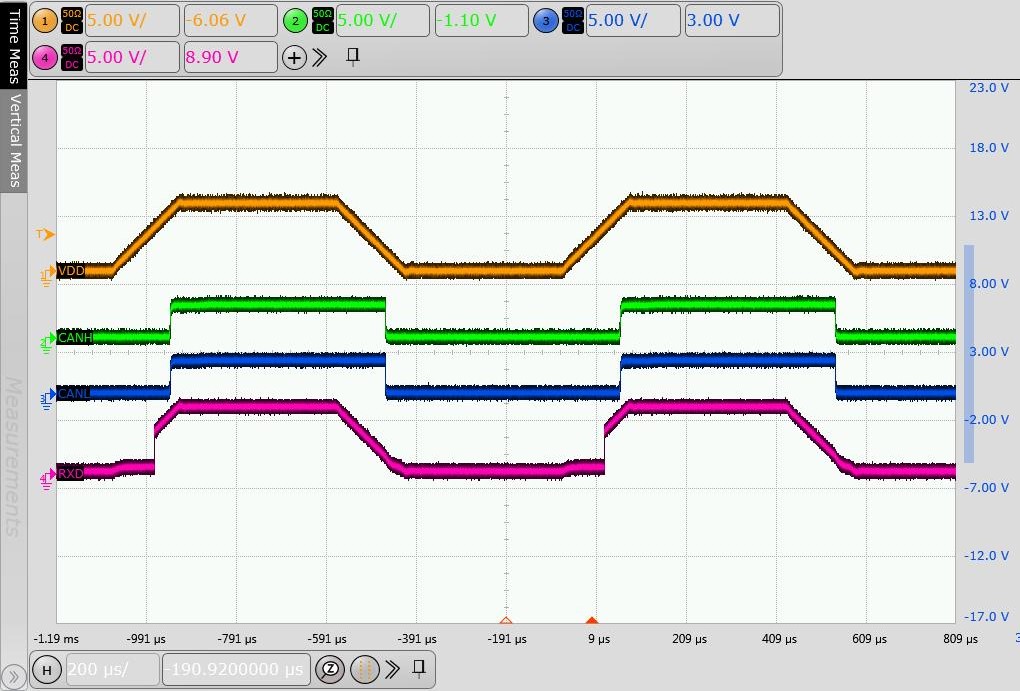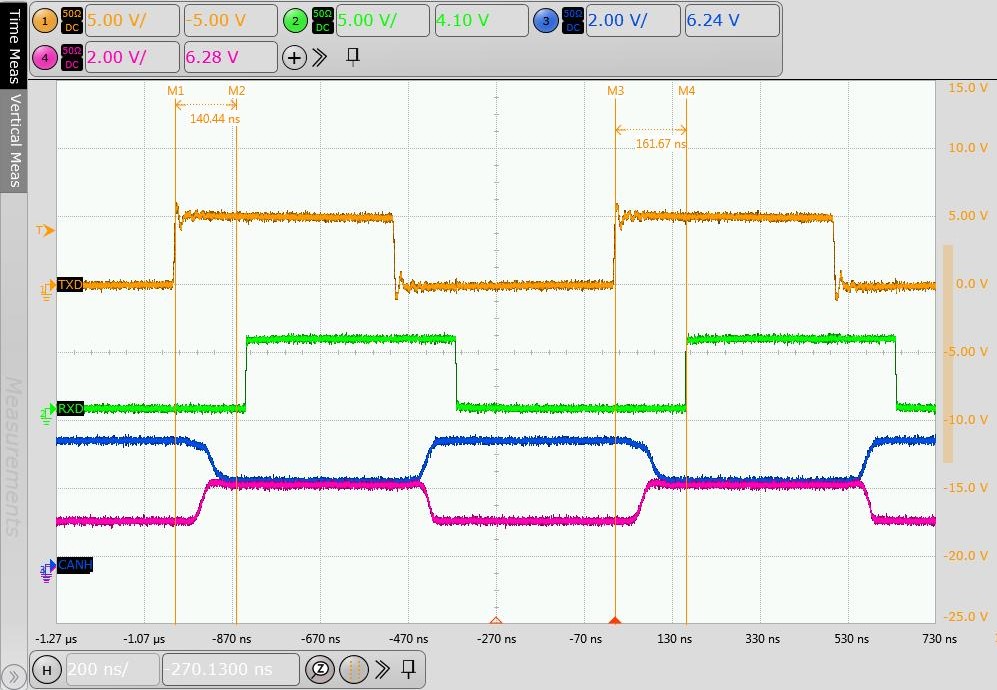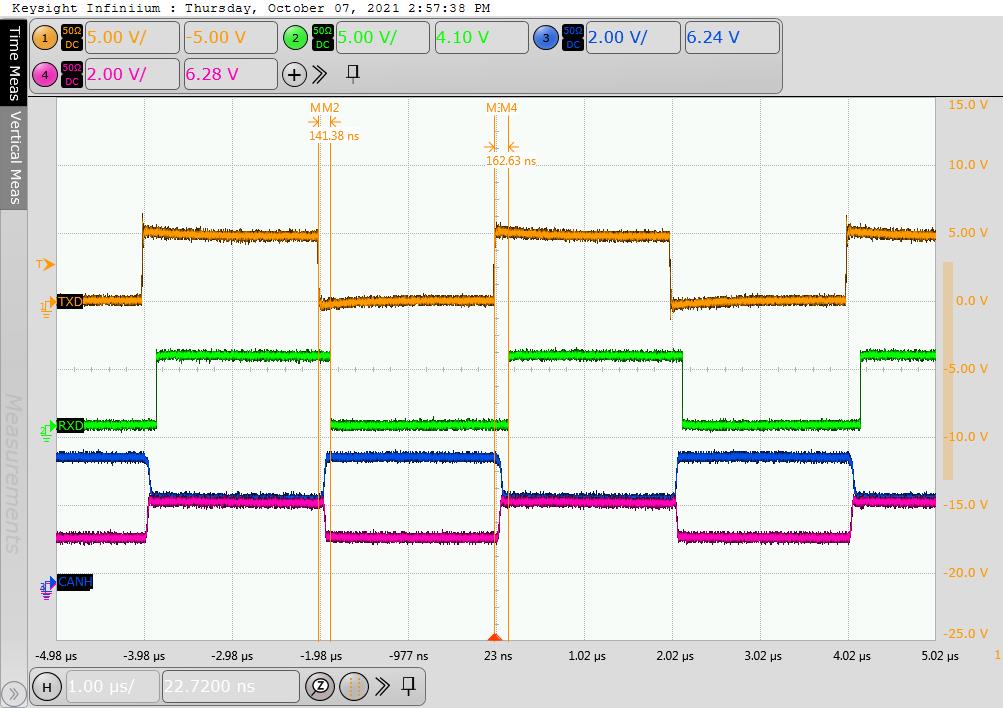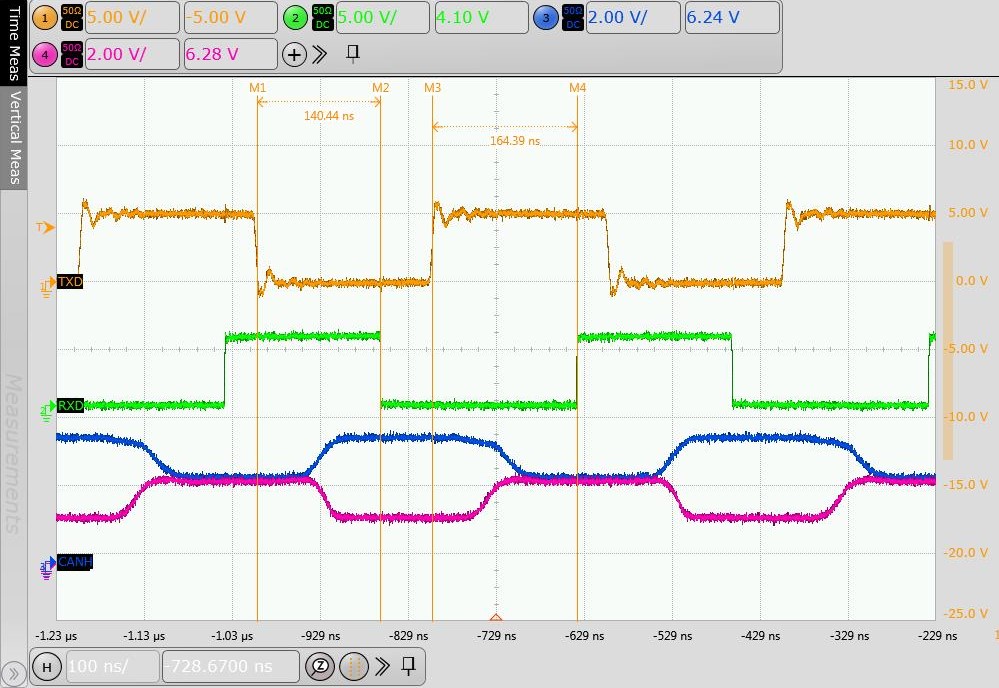JAJSLI4A May 2021 – December 2021 ISOW1044
PRODUCTION DATA
- 1 特長
- 2 アプリケーション
- 3 概要
- 4 Revision History
- 5 概要 (続き)
- 6 Device Comparison Table
- 7 Pin Configuration and Functions
-
8 Specifications
- 8.1 Absolute Maximum Ratings
- 8.2 ESD Ratings
- 8.3 Recommended Operating Conditions
- 8.4 ThermalInformation
- 8.5 Power Ratings
- 8.6 Insulation Specifications
- 8.7 Safety-Related Certifications
- 8.8 Safety Limiting Values
- 8.9 Electrical Characteristics
- 8.10 Supply Current Characteristics
- 8.11 Switching Characteristics
- 8.12 Insulation Characteristics Curves
- 8.13 Typical Characteristics
- 9 Parameter Measurement Information
- 10Detailed Description
- 11Application and Implementation
- 12Power Supply Recommendations
- 13Layout
- 14Device and Documentation Support
- 15Mechanical, Packaging, and Orderable Information
8.13 Typical Characteristics
VDD = VIO , VISOIN = VISOOUT, CL(RXD) = 15 pF , RL = 60 Ω, TA = 25°C unless otherwise noted.

| VISOOUT = 5 V | STB = Low |

| VISOOUT = 5 V | STB = Low |

| VDD = 5 V | STB = Low | VISOOUT = 5 V |

| VDD = 5 V | STB = Low | VISOOUT = 5 V |
| CL = 100 pF |

| VDD = 5 V | STB = Low |
 Figure 8-13 Glitch Free Power Up on VDD
Figure 8-13 Glitch Free Power Up on VDD Figure 8-15 Typical TXD, RXD, CANH and CANL Waveforms at 2 Mbps
Figure 8-15 Typical TXD, RXD, CANH and CANL Waveforms at 2 Mbps 
| VDD = 5 V | STB = Low | VISOOUT = 5 V |

| VDD = 5 V | STB = High | VISOOUT = 5 V |

| VDD = 5 V | STB = Low | VISOOUT = 5 V |
| CL = 100 pF |

| VDD = 5 V | STB = Low |

| VDD = 5 V | STB = Low |
 Figure 8-14 Typical TXD, RXD, CANH and CANL Waveforms at 500
kbps
Figure 8-14 Typical TXD, RXD, CANH and CANL Waveforms at 500
kbps  Figure 8-16 Typical TXD, RXD, CANH and CANL Waveforms at 5 Mbps
Figure 8-16 Typical TXD, RXD, CANH and CANL Waveforms at 5 Mbps